Planting Bok Choy for Beginners might seem daunting, but trust me, it’s easier than you think! Have you ever dreamt of stepping outside your door and harvesting fresh, crisp greens for a delicious stir-fry or salad? Well, that dream can become a reality, even if you’re a complete newbie to the world of gardening.
Bok choy, also known as pak choi, has been a staple in Asian cuisine for centuries, with its origins tracing back to China. It’s not just delicious; it’s packed with vitamins and nutrients, making it a healthy addition to any diet. But beyond its nutritional value, growing your own bok choy connects you to a rich culinary heritage and offers a sense of accomplishment that’s hard to beat.
In today’s fast-paced world, knowing where your food comes from is more important than ever. Store-bought vegetables can be expensive and often lack the freshness and flavor of homegrown produce. That’s where this DIY guide comes in! I’m going to walk you through every step of planting bok choy for beginners, from choosing the right seeds to harvesting your bountiful crop. You’ll learn simple tricks and hacks that will ensure success, even if you don’t have a green thumb. Get ready to enjoy the satisfaction of growing your own food and adding a touch of freshness to your meals!
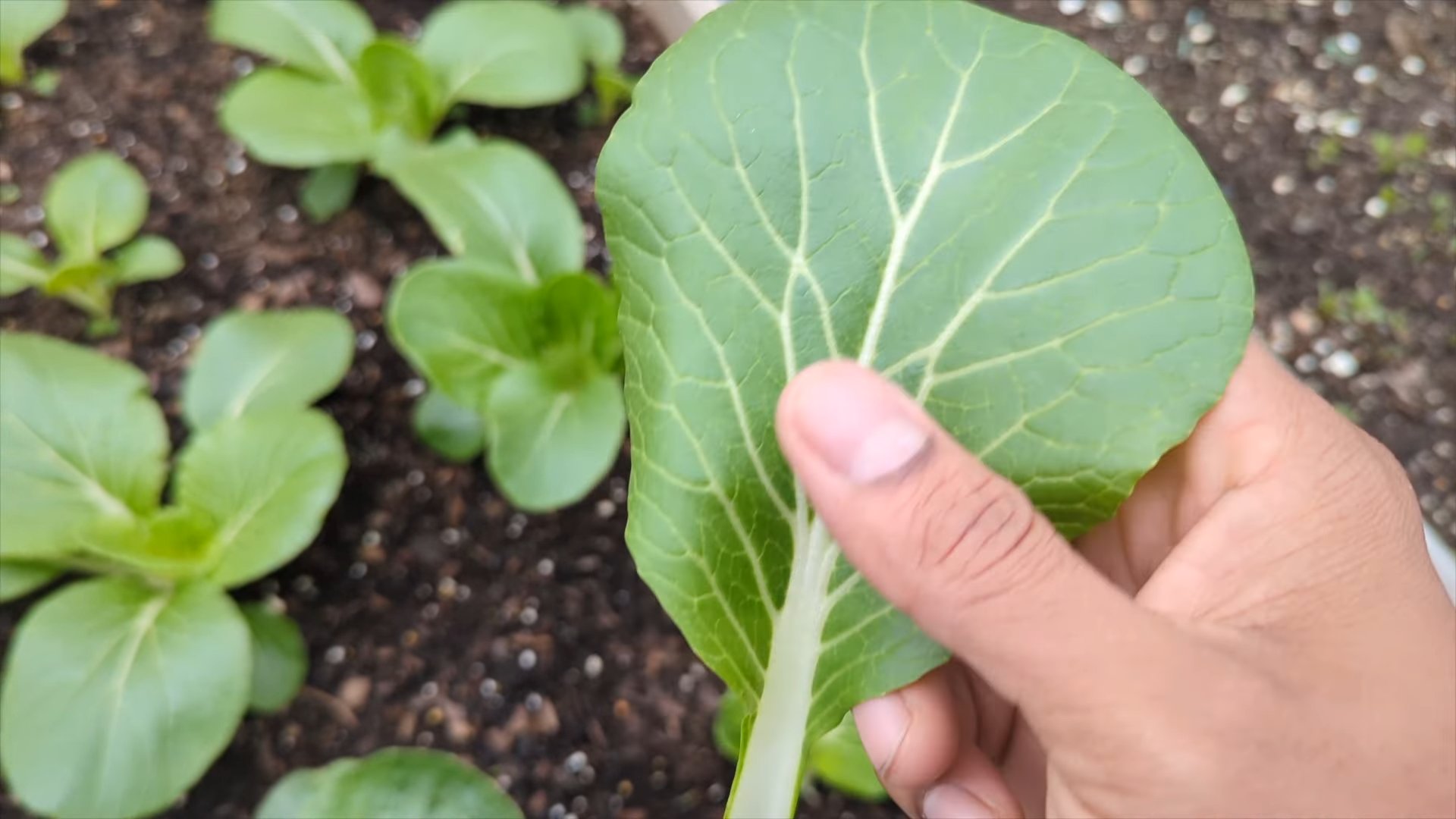
Planting Bok Choy: A Beginner’s Guide to Growing Your Own Delicious Greens
Okay, so you want to grow bok choy? Awesome! It’s a fantastic choice – delicious, nutritious, and relatively easy to grow, even if you’re a complete newbie like I was when I started. This guide will walk you through everything you need to know to successfully plant and grow your own bok choy. Let’s get started!
Choosing the Right Bok Choy Variety
First things first, there are a few different types of bok choy you can choose from. Knowing the difference will help you pick the one that best suits your needs and growing conditions.
* Standard Bok Choy (Pak Choi): This is the most common type, with large, dark green leaves and thick, white stalks. It’s a reliable grower and great for stir-fries and soups.
* Shanghai Bok Choy (Qing Cai): This variety has lighter green leaves and pale green stalks. It’s known for its milder flavor and tender texture. I personally love this one in salads!
* Baby Bok Choy: As the name suggests, this is a smaller version of standard bok choy. It’s harvested when young and tender, making it perfect for quick cooking or eating raw.
* Dwarf Bok Choy: Even smaller than baby bok choy, dwarf varieties are great for container gardening or small spaces.
Consider your climate and personal preferences when choosing a variety. If you live in a warmer climate, Shanghai bok choy might be a better choice as it’s more heat-tolerant. If you’re short on space, baby or dwarf bok choy are excellent options.
Preparing Your Planting Area
Bok choy thrives in well-drained, fertile soil. Here’s how to get your planting area ready:
* Sunlight: Bok choy needs at least 4-6 hours of sunlight per day. Choose a location that gets plenty of sun, especially in the morning.
* Soil: The ideal soil for bok choy is loose, well-draining, and rich in organic matter. Amend your soil with compost or well-rotted manure to improve its fertility and drainage.
* pH Level: Bok choy prefers a slightly acidic to neutral soil pH of 6.0 to 7.5. You can test your soil pH with a soil testing kit and amend it accordingly.
* Clearing the Area: Remove any weeds, rocks, or debris from the planting area. This will give your bok choy seedlings a clear space to grow.
* Tilling or Digging: Loosen the soil to a depth of at least 6-8 inches. This will make it easier for the roots to penetrate the soil and access nutrients.
Starting Bok Choy from Seed
You can either start bok choy seeds indoors or directly sow them in your garden. I’ve done both, and honestly, direct sowing is usually easier, especially if you live in a mild climate.
Direct Sowing (My Preferred Method)
1. Timing: Bok choy is a cool-season crop, so the best time to plant it is in early spring or late summer/early fall. Avoid planting during the hottest months of summer, as the heat can cause the plants to bolt (go to seed prematurely). Check your local frost dates to determine the best planting time for your area. I usually aim for 4-6 weeks before the first expected frost in the fall or after the last expected frost in the spring.
2. Sowing Seeds: Sow the seeds about ¼ to ½ inch deep and 1-2 inches apart in rows that are 12-18 inches apart.
3. Watering: Gently water the soil after sowing the seeds. Keep the soil consistently moist until the seeds germinate.
4. Thinning: Once the seedlings emerge and have a few true leaves, thin them to 6-8 inches apart. This will give them enough space to grow and prevent overcrowding. Don’t just yank them out! Gently snip them at the soil line with scissors to avoid disturbing the roots of the remaining plants.
Starting Seeds Indoors (If You Prefer)
1. Timing: Start the seeds indoors 4-6 weeks before the last expected frost.
2. Seed Starting Mix: Use a seed starting mix that is specifically designed for starting seeds. Avoid using garden soil, as it can be too heavy and may contain diseases.
3. Planting: Sow the seeds about ¼ inch deep in seed starting trays or small pots.
4. Watering: Water the soil gently and keep it consistently moist.
5. Light: Place the seed starting trays or pots under grow lights or in a sunny window. The seedlings need at least 12-14 hours of light per day.
6. Hardening Off: Before transplanting the seedlings outdoors, you need to harden them off. This means gradually exposing them to outdoor conditions over a period of 7-10 days. Start by placing them in a sheltered location for a few hours each day and gradually increase the amount of time they spend outdoors.
7. Transplanting: Once the seedlings are hardened off, transplant them into your garden, spacing them 6-8 inches apart.
Caring for Your Bok Choy Plants
Once your bok choy plants are established, here’s how to keep them healthy and thriving:
* Watering: Bok choy needs consistent moisture, especially during hot, dry weather. Water deeply and regularly, aiming for about 1 inch of water per week. Avoid overhead watering, as this can lead to fungal diseases. Soaker hoses or drip irrigation are great options.
* Fertilizing: Bok choy is a heavy feeder, so it benefits from regular fertilization. Use a balanced fertilizer or side-dress with compost or well-rotted manure every few weeks. I like to use fish emulsion – it smells a bit, but the plants love it!
* Weeding: Keep the planting area free of weeds, as they can compete with the bok choy plants for nutrients and water. Hand-pull weeds regularly or use a hoe to cultivate the soil.
* Pest Control: Bok choy can be susceptible to pests such as aphids, flea beetles, and cabbage worms. Inspect your plants regularly for signs of pests and take action if necessary. You can use insecticidal soap, neem oil, or row covers to protect your plants. I’ve found that covering them with a lightweight row cover really helps prevent pest problems.
* Bolting Prevention: As mentioned earlier, bok choy can bolt (go to seed) in hot weather. To prevent bolting, plant in early spring or late summer/early fall, provide shade during the hottest part of the day, and keep the soil consistently moist.
Harvesting Your Bok Choy
The best part! You can harvest bok choy at any stage of growth, depending on your preference.
* Baby Bok Choy: Harvest baby bok choy when the plants are about 4-6 inches tall. You can harvest the entire plant or just the outer leaves.
* Mature Bok Choy: Harvest mature bok choy when the plants are about 12-18 inches tall. You can harvest the entire plant or just the outer leaves.
* Harvesting Technique: To harvest the entire plant, cut it off at the base with a sharp knife. To harvest individual leaves, simply snap them off near the base of the plant.
Storing Your Harvested Bok Choy
After harvesting, bok choy can be stored in the refrigerator for up to a week.
* Washing: Wash the bok choy thoroughly before storing it.
* Drying: Dry the bok choy completely before storing it. You can use a salad spinner or pat it dry with paper towels.
* Storage: Wrap the bok choy in a paper towel and store it in a plastic bag in the refrigerator.
Troubleshooting Common Bok Choy Problems
Even with the best care, you might encounter some problems while growing bok choy. Here are a few common issues and how to address them:
* Bolting: As mentioned earlier, bolting is when the plant prematurely goes to seed. This is usually caused by hot weather or stress. To prevent bolting, plant at the right time of year, provide shade, and keep the soil consistently moist.
* Aphids: Aphids are small, sap-sucking insects that can infest bok choy plants. They can cause the leaves to become distorted and yellow. To control aphids, spray the plants with insecticidal soap or neem oil.
* Flea Beetles: Flea beetles are small, jumping insects that can chew holes in the leaves of bok choy plants. To control flea beetles, use row covers to protect your plants or spray them with insecticidal soap or neem oil.
* Cabbage Worms: Cabbage worms are the larvae of cabbage white butterflies. They can devour the leaves of bok choy plants. To control cabbage worms,
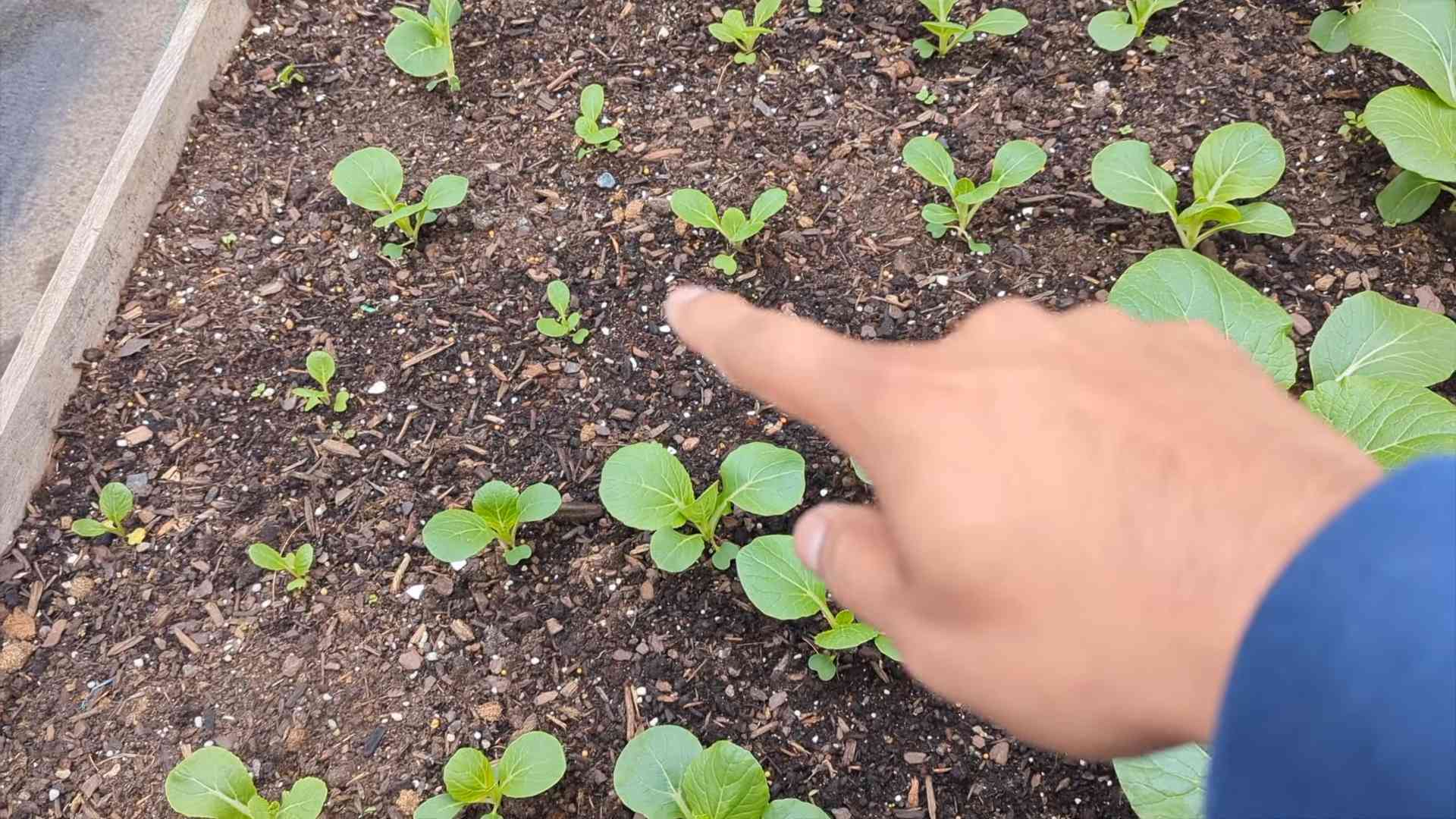
Conclusion
So, there you have it! Planting bok choy doesn’t have to be intimidating. With a little planning and these simple steps, you can enjoy fresh, crisp bok choy right from your own garden. This DIY trick for starting your bok choy journey, whether you choose seeds or seedlings, is a game-changer for beginners and seasoned gardeners alike. It’s cost-effective, rewarding, and allows you to control the quality of your produce from start to finish.
Why is this a must-try? Because store-bought bok choy simply can’t compare to the vibrant flavor and satisfying crunch of homegrown. Plus, you’ll know exactly what went into growing it – no mystery pesticides or long-distance transportation. You’re supporting sustainable practices and enjoying the freshest possible ingredients.
But the fun doesn’t stop there! Feel free to experiment with different varieties of bok choy. Try the baby bok choy for a more delicate flavor and quicker harvest, or explore the Shanghai bok choy with its spoon-shaped leaves. You can also adjust the planting schedule to extend your harvest season. Consider succession planting, sowing new seeds every few weeks, to ensure a continuous supply of this delicious vegetable.
Another variation to consider is companion planting. Bok choy thrives alongside other vegetables like carrots, onions, and garlic. These companions can help deter pests and improve the overall health of your garden. You can also interplant with herbs like dill or chamomile, which are known to attract beneficial insects.
Don’t be afraid to get creative with your planting location, too. While bok choy prefers full sun, it can tolerate partial shade, especially in hotter climates. If you’re limited on space, consider growing bok choy in containers. Just make sure to choose a pot that’s at least 12 inches deep and wide to accommodate the plant’s root system.
Remember to pay attention to your soil. Bok choy loves well-drained, fertile soil. Amend your soil with compost or other organic matter to improve its texture and nutrient content. Regular watering is also crucial, especially during dry spells. Aim to keep the soil consistently moist, but not waterlogged.
We’re confident that this DIY trick will empower you to successfully grow your own bok choy. It’s a simple, yet effective method that yields impressive results. The satisfaction of harvesting your own fresh vegetables is truly unparalleled.
So, what are you waiting for? Grab your seeds or seedlings, prepare your garden bed or containers, and get planting! We encourage you to try this DIY trick for planting bok choy and share your experience with us. Let us know what varieties you tried, what challenges you faced, and what successes you celebrated. Share your photos and tips in the comments below. We can’t wait to hear about your bok choy growing adventures! Happy gardening!
Frequently Asked Questions (FAQ)
What is the best time of year to plant bok choy?
Bok choy is a cool-season crop, meaning it thrives in cooler temperatures. The best time to plant bok choy is in early spring or late summer/early fall. For a spring crop, start seeds indoors 4-6 weeks before the last expected frost. Transplant seedlings outdoors once the danger of frost has passed. For a fall crop, sow seeds directly into the garden in late summer or early fall, about 6-8 weeks before the first expected frost. In warmer climates, you can grow bok choy throughout the winter. Avoid planting during the hottest months of summer, as high temperatures can cause bolting (premature flowering).
How much sunlight does bok choy need?
Bok choy prefers full sun, which means at least 6 hours of direct sunlight per day. However, it can tolerate partial shade, especially in hotter climates. If you live in a region with intense summer heat, providing some afternoon shade can help prevent bolting and leaf burn. When growing bok choy indoors, use grow lights to supplement natural sunlight and ensure adequate light exposure.
What kind of soil is best for growing bok choy?
Bok choy thrives in well-drained, fertile soil that is rich in organic matter. The ideal soil pH is between 6.0 and 7.5. Before planting, amend your soil with compost, aged manure, or other organic matter to improve its texture, drainage, and nutrient content. You can also add a slow-release fertilizer to provide essential nutrients throughout the growing season. Avoid heavy clay soils, as they can retain too much moisture and lead to root rot. If you have clay soil, amend it with plenty of organic matter to improve drainage.
How often should I water bok choy?
Bok choy needs consistent moisture to thrive. Water regularly, especially during dry spells, to keep the soil consistently moist but not waterlogged. Aim for about 1 inch of water per week. Check the soil moisture regularly by sticking your finger about an inch into the soil. If the soil feels dry, it’s time to water. Avoid overhead watering, as it can promote fungal diseases. Instead, water at the base of the plants using a soaker hose or watering can. Mulching around the plants can also help retain moisture and suppress weeds.
What are some common pests and diseases that affect bok choy?
Bok choy is susceptible to several common pests and diseases, including aphids, cabbage worms, flea beetles, and fungal diseases like downy mildew and clubroot. To prevent pest and disease problems, practice good garden hygiene. Remove weeds and debris regularly, and rotate your crops each year. Inspect your plants regularly for signs of pests or diseases. If you find pests, you can try hand-picking them off the plants or using insecticidal soap or neem oil. For fungal diseases, improve air circulation around the plants and avoid overhead watering. You can also use a fungicide if necessary.
How do I harvest bok choy?
You can harvest bok choy at any stage of growth, depending on your preference. For baby bok choy, harvest when the leaves are about 4-6 inches long. For mature bok choy, harvest when the heads are firm and compact, typically about 6-8 weeks after planting. To harvest, simply cut the entire head of bok choy at the base of the plant using a sharp knife. You can also harvest individual leaves as needed, starting with the outer leaves.
Can I grow bok choy in containers?
Yes, bok choy can be successfully grown in containers. Choose a pot that is at least 12 inches deep and wide to accommodate the plant’s root system. Use a well-draining potting mix and water regularly. Place the container in a location that receives at least 6 hours of direct sunlight per day. Fertilize regularly with a balanced fertilizer.
How do I prevent bok choy from bolting?
Bolting, or premature flowering, can occur when bok choy is exposed to high temperatures or stress. To prevent bolting, plant bok choy at the right time of year (early spring or late summer/early fall). Provide some afternoon shade in hot climates. Water regularly to keep the soil consistently moist. Avoid stressing the plants by providing adequate nutrients and protecting them from pests and diseases. Choose bolt-resistant varieties of bok choy.
Can I eat the entire bok choy plant?
Yes, the entire bok choy plant is edible, including the leaves, stems, and flowers. The leaves are tender and mild-flavored, while the stems are crisp and slightly sweet. The flowers are also edible and have a slightly peppery taste.
How do I store bok choy after harvesting?
To store bok choy after harvesting, wrap it loosely in a damp paper towel and place it in a plastic bag in the refrigerator. It will keep for about 3-5 days. Avoid washing the bok choy before storing it, as this can promote spoilage. Wash it just before using.


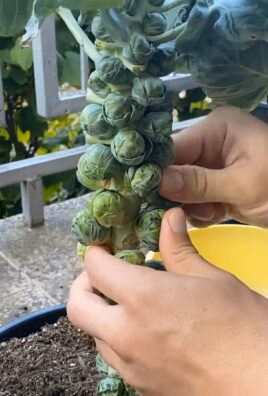
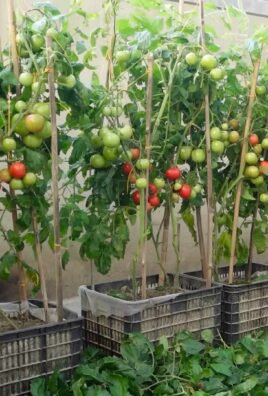
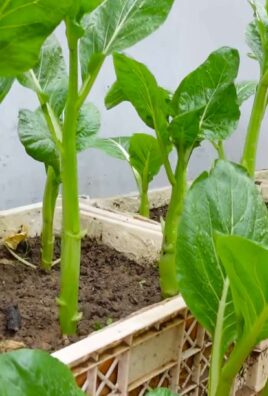
Leave a Comment